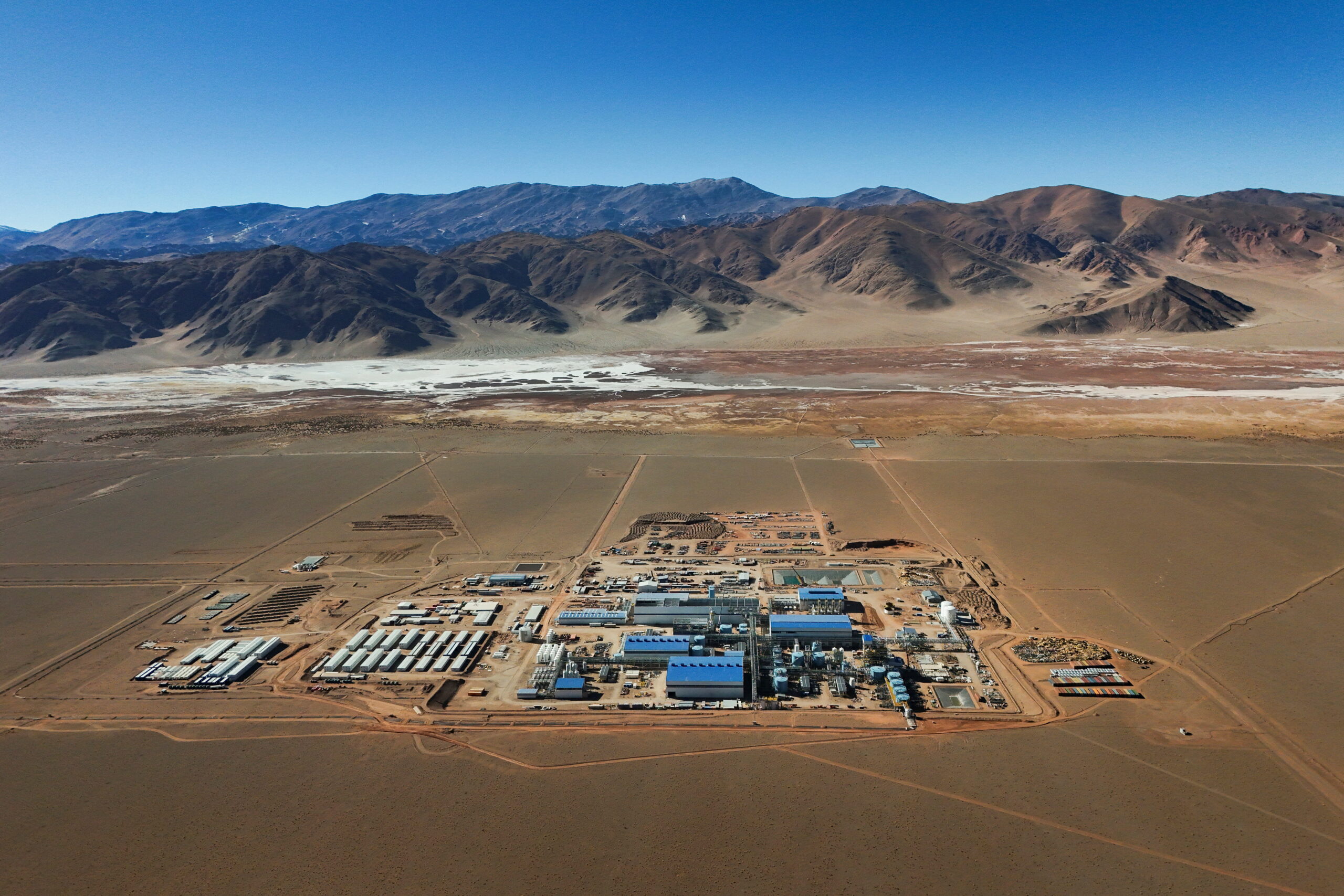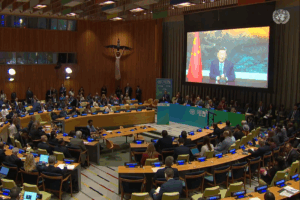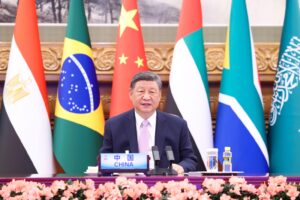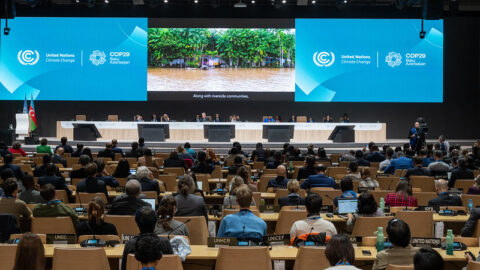Kentucky citizens’ law group finds 40 percent of state’s active coal strip mines are “functionally abandoned.”
LOUISVILLE, Ky.—With a federal investigation into technically active but non-producing “zombie” mines set to begin in March, a citizens law group in Kentucky has found production idled at nearly 40 percent of all active coal strip mines in the state, with some not mined in more than a de’cade.
Congressional Office Agrees to Investigate ‘Zombie’ Coal Mines
Climate Change
Analysis: Only half of Chinese provinces finalise key ‘Document 136’ renewable rules
Only half of China’s provinces have finalised new rules for pricing wind and solar power, according to Carbon Brief analysis.
Local governments are required to have published final plans to reform the way wind and solar power is priced in their jurisdiction before the end of this year.
This follows the release of a central government directive in February – known as “Document 136” (136号文) – that calls for developing a more “market-based” approach to pricing newly installed renewable projects.
The new rules will replace the previous pricing mechanism, which gave wind and solar generators guaranteed sales at a fixed price tied to the benchmark electricity price from coal.
The shift towards market-based pricing for wind and solar is seen as a key uncertainty for the sector, with implications for China’s wider energy and emissions targets.
Carbon Brief analysis finds that, as of 15 October 2025, only 18 provinces had issued finalised “Document 136” plans.
Another 10 have published draft plans, while Jiangsu, Tianjin and Tibet have yet to indicate what their strategies will be.
Central direction, local rules
In February this year, China’s central government issued a notice on “deepening market-based reform of feed-in tariffs for new energy”, also known as “Document 136”.
The document calls on local governments to develop plans for new pricing mechanisms for wind and solar power, applicable to projects completed on or after 1 June 2025.
Local governments are expected to develop “sustainable new-energy pricing mechanisms” (新能源可持续发展价格结算机制), in which they only offer a fixed price to a set amount of new wind and solar capacity each year.
The amount offered a fixed price is to be linked to each province’s annual clean-energy installation quotas. Moreover, the fixed price is to be determined at auction, through a mechanism resembling the UK’s contract for difference (CfD).
Any additional wind and solar projects, which are unable to secure contracts via the provincial auction mechanism, would need to find buyers for their electricity on the open market. This could be done through a “power purchase agreement” with a grid operator or a large industrial user, for example, or by selling their power in spot markets.
The move is part of wider efforts to shift China’s giant electricity system towards more market-based operation, rather than running on rules set by the government, including prices for coal-fired power plants determined by bureaucrats.
The shift towards market-based pricing for renewables has been attributed to both the falling costs of building new solar and windfarms, as well as to the grid challenges created by record renewable capacity additions.
At the time of the policy’s release earlier this year, analysts expected the rules to have a chilling effect on China’s wind and solar buildout in the short term, as developers adjust to the new rules and to lower – and more uncertain – prices set at auction.
The notice led to a rush of new capacity additions ahead of the June cut-off, with an estimated 100 solar cells being installed every second in the month of May.
However, a subsequent policy requiring cement, polysilicon and iron and steel manufacturers, as well as certain types of data centres, to use renewable power to fulfil a certain proportion of their overall consumption has been seen as a “backstop” that may buoy industry demand for new wind and solar capacity.
Furthermore, analysts believe that “Document 136” may strengthen China’s clean-energy industries in the long term, by forcing companies to become more innovative and competitive.
Below, Carbon Brief lists which provinces have published finalised “Document 136” pricing plans (green), which provinces have published a form of draft plan (yellow) and which provinces have yet not published their plans at all (white).
By default, provinces are listed in order of the size of their energy-related carbon dioxide (CO2) emissions, based on a dataset for 2022 from the thinktank Institute of Global Decarbonization Progress.
New territory
So far, Carbon Brief finds, only just over half of provinces have issued finalised plans. Collectively, these provinces account for 61% of China’s energy-related emissions.
Another 10, representing 31% of emissions, have published draft plans, while Jiangsu, Tianjin and Tibet – the final 8% of CO2 – have yet to publish anything.
A few provinces published finalised rules in early June, including renewable-power heavyweights Shandong and Inner Mongolia.
(Inner Mongolia’s power grid is split into two zones – “Inner Mongolia East” and “Inner Mongolia West” – which are administered separately.)
In a nationwide conference call at the end of August, National Energy Administration officials urged provinces to “promptly promote” concrete plans.
Eleven provinces have published finalised rules since then, including major polluters Heilongjiang, Hebei and Guangdong, with a further eight publishing draft rules, according to Carbon Brief calculations.
The delay in provinces completing their plans can be attributed to the fact that local policymakers are trying to establish a completely new system of pricing power from scratch, says David Fishman, principal at energy consultancy the Lantau Group.
He tells Carbon Brief that, for some of the provinces that have issued finalised rules, “fairly meaningful differences” can be found between the final version and earlier drafts – indicating a high level of debate on the best path forward.
Shandong province was the first to issue draft rules, setting the tone for other local governments’ documents.
The eastern province is seen as a leader both in renewable energy additions and in undertaking power-market reforms. It is also the largest source of energy-related emissions in China.
Its plan saw notable policy innovations, such as setting an auction subscription threshold of 125% to encourage competition, by ensuring that not all bidders will be successful.
In September, it also became the first province in China to hold auctions for solar and wind power under the new rules, with the winning bidders securing prices of 0.319 yuan per kilowatt-hour (yuan/kWh) for wind and 0.225 yuan/kWh for solar.
These prices are equivalent to £33.8 per megawatt hour (MWh), or $44.8/MWh, for wind and £23.8/MWh, or $31.6/MWh, for solar.
While the wind prices are seen as high enough to be relatively acceptable to project developers, the price for solar is below the level thought to be needed to finance such developments. As such, it could “discourage” further solar investment in the province, Reuters reports.
Shortly afterwards, the southwestern province of Yunnan also held its first renewables auction, setting a price of 0.33 yuan/kWh for both wind and solar projects.
Effect on future additions
Analysts disagree about what impact the “Document 136” policy will have on the pace of China’s clean-energy additions.
The country installed a record 360 gigawatts (GW) of wind and solar in 2024, followed by an even higher 212GW in the first half of 2025 for solar alone, as developers rushed to complete ahead of the June deadline.
In September, Chinese president Xi Jinping announced a target of 3,600GW of wind and solar capacity by 2035 as part of the country’s new “nationally determined contribution” (NDC) to the Paris Agreement.
While hugely ambitious in the context of current global wind and solar capacity, which stood at 1,400GW at the end of 2024, this new goal is equivalent to just 200GW of new wind and solar per year. This would be a significant slowdown compared with China’s recent pace of expansion.
Dr Muyi Yang, senior energy analyst for Asia at thinktank Ember, tells Carbon Brief that he does not see the pricing reforms as a “signal of a structural slowdown in clean capacity [additions]”. He adds:
“Adding panels and turbines is the easy part…China is rewiring the world’s largest power sector, with multiple layers of interests and legacy assets to manage. In navigating this complexity, pledge targets act as a floor, providing certainty to clean-energy developers and clean-tech manufacturers. The NDC goal reflects what decision-makers are confident China can deliver given these constraints.”
But Fishman, writing on LinkedIn, notes that the pricing reforms could make it “challenging” for China to hit Xi’s new 2035 target.
Renewables developers are not incentivised to sustain previous years’ high installation figures under the local rules that have been rolled out so far, he notes, adding: “We will be lucky to see 200GW in a single year again for a long time.”
In its Renewables 2025 report, published in October 2025, the International Energy Agency (IEA) shaved 5% off its outlook for wind and solar growth in China out to 2030, a reduction of 129GW. It attributes this downgrade to the country’s renewable pricing reforms “impacting project economics and lowering growth expectations”.
Nevertheless, it adds that China is still projected to add “nearly 2,660GW” of new renewable capacity between 2025 and 2030, meaning that it would reach its 2035 wind and solar target “five years ahead of schedule”.
Bolstering storage demand
Beyond wind and solar capacity, “Document 136” also signalled potentially disruptive changes for China’s energy storage sector. It removed requirements at the central level that wind and solar projects must include a storage component.
This led to concerns at the time that demand for battery energy storage facilities could drop substantially.
In practice, however, different provinces have designed their own approaches to commissioning energy storage under their “Document 136” plans.
Some, such as Shandong, have eliminated energy storage requirements, while others, such as Yunnan and Guizhou have kept them.
A recent analysis by consulting firm Infolink argues that a significant drop in demand for energy storage projects is, therefore, “unlikely”, due to expected ongoing demand for “renewable integration and grid flexibility”.
Pumped storage and gas-fired power capacity make up only 7% of China’s electricity system – compared to 34% in Spain and 50% in the US, according to analysis by NGO Greenpeace. As such, it says there will likely be ongoing demand for battery storage as a major contributor to power flexibility in China.
The Chinese government set a target in a recent action plan for 180GW of new-energy storage by 2027, up from just over 100GW at the end of June 2025.
The target “directly addresses the issue of low short-term economic viability” of the energy storage sector caused by “Document 136”, economic news outlet Jiemian reports, although it notes that “uncertainties” still remain.
However, unnamed industry participants tell financial news outlet Yicai that the pricing reform has removed the storage sector’s “fig leaf”, meaning it is likely to result in the number of energy storage companies falling from the current figure of more than 200,000.
Yang tells Carbon Brief that the reforms will likely lead to “more storage-paired and hybrid projects” that better meet province-specific needs and “prioritise reliability and integration over headline [megawatts]”.
The post Analysis: Only half of Chinese provinces finalise key ‘Document 136’ renewable rules appeared first on Carbon Brief.
Analysis: Only half of Chinese provinces finalise key ‘Document 136’ renewable rules
Climate Change
Efforts to green lithium extraction face scrutiny over water use
Mining companies are showcasing new technologies which they say could extract more lithium – a key ingredient for electric vehicle (EV) batteries – from South America’s vast, dry salt flats with lower environmental impacts.
But environmentalists question whether the expensive technology is ready to be rolled out at scale, while scientists warn it could worsen the depletion of scarce freshwater resources in the region and say more research is needed.
The “lithium triangle” – an area spanning Argentina, Bolivia and Chile – holds more than half of the world’s known lithium reserves. Here, lithium is found in salty brine beneath the region’s salt flats, which are among some of the driest places on Earth.
Lithium mining in the region has soared, driven by booming demand to manufacture batteries for EVs and large-scale energy storage.
Mining companies drill into the flats and pump the mineral-rich brine to the surface, where it is left under the sun in giant evaporation pools for 18 months until the lithium is concentrated enough to be extracted.
The technique is relatively cheap but requires vast amounts of land and water. More than 90% of the brine’s original water content is lost to evaporation and freshwater is needed at different stages of the process.
One study suggested that the Atacama Salt Flat in Chile is sinking by up to 2 centimetres a year because lithium-rich brine is being pumped at a faster rate than aquifers are being recharged.
Lithium extraction in the region has led to repeated conflicts with local communities, who fear the impact of the industry on local water supplies and the region’s fragile ecosystem.
The lithium industry’s answer is direct lithium extraction (DLE), a group of technologies that selectively extracts the silvery metal from brine without the need for vast open-air evaporation ponds. DLE, it argues, can reduce both land and water use.
Direct lithium extraction investment is growing
The technology is gaining considerable attention from mining companies, investors and governments as a way to reduce the industry’s environmental impacts while recovering more lithium from brine.
DLE investment is expected to grow at twice the pace of the lithium market at large, according to research firm IDTechX.
There are around a dozen DLE projects at different stages of development across South America. The Chilean government has made it a central pillar of its latest National Lithium Strategy, mandating its use in new mining projects.
Last year, French company Eramet opened Centenario Ratones in northern Argentina, the first plant in the world to attempt to extract lithium solely using DLE.
Eramet’s lithium extraction plant is widely seen as a major test of the technology. “Everyone is on the edge of their seats to see how this progresses,” said Federico Gay, a lithium analyst at Benchmark Mineral Intelligence. “If they prove to be successful, I’m sure more capital will venture into the DLE space,” he said.
More than 70 different technologies are classified as DLE. Brine is still extracted from the salt flats but is separated from the lithium using chemical compounds or sieve-like membranes before being reinjected underground.
DLE techniques have been used commercially since 1996, but only as part of a hybrid model still involving evaporation pools. Of the four plants in production making partial use of DLE, one is in Argentina and three are in China.
Reduced environmental footprint
New-generation DLE technologies have been hailed as “potentially game-changing” for addressing some of the issues of traditional brine extraction.
“DLE could potentially have a transformative impact on lithium production,” the International Lithium Association found in a recent report on the technology.
Firstly, there is no need for evaporation pools – some of which cover an area equivalent to the size of 3,000 football pitches.
“The land impact is minimal, compared to evaporation where it’s huge,” said Gay.


The process is also significantly quicker and increases lithium recovery. Roughly half of the lithium is lost during evaporation, whereas DLE can recover more than 90% of the metal in the brine.
In addition, the brine can be reinjected into the salt flats, although this is a complicated process that needs to be carefully handled to avoid damaging their hydrological balance.
However, Gay said the commissioning of a DLE plant is currently several times more expensive than a traditional lithium brine extraction plant.
“In theory it works, but in practice we only have a few examples,” Gay said. “Most of these companies are promising to break the cost curve and ramp up indefinitely. I think in the next two years it’s time to actually fulfill some of those promises.”
Freshwater concerns
However, concerns over the use of freshwater persist.
Although DLE doesn’t require the evaporation of brine water, it often needs more freshwater to clean or cool equipment.
A 2023 study published in the journal Nature reviewed 57 articles on DLE that analysed freshwater consumption. A quarter of the articles reported significantly higher use of freshwater than conventional lithium brine mining – more than 10 times higher in some cases.
“These volumes of freshwater are not available in the vicinity of [salt flats] and would even pose problems around less-arid geothermal resources,” the study found.
The company tracking energy transition minerals back to the mines
Dan Corkran, a hydrologist at the University of Massachusetts, recently published research showing that the pumping of freshwater from the salt flats had a much higher impact on local wetland ecosystems than the pumping of salty brine. “The two cannot be considered equivalent in a water footprint calculation,” he said, explaining that doing so would “obscure the true impact” of lithium extraction.
Newer DLE processes are “claiming to require little-to-no freshwater”, he added, but the impact of these technologies is yet to be thoroughly analysed.
Dried-up rivers
Last week, Indigenous communities from across South America held a summit to discuss their concerns over ongoing lithium extraction.
The meeting, organised by the Andean Wetlands Alliance, coincided with the 14th International Lithium Seminar, which brought together industry players and politicians from Argentina and beyond.
Indigenous representatives visited the nearby Hombre Muerto Salt Flat, which has borne the brunt of nearly three decades of lithium extraction. Today, a lithium plant there uses a hybrid approach including DLE and evaporation pools.
Local people say the river “dried up” in the years after the mine opened. Corkran’s study linked a 90% reduction in wetland vegetation to the lithium’s plant freshwater extraction.
Pia Marchegiani, of Argentine environmental NGO FARN, said that while DLE is being promoted by companies as a “better” technique for extraction, freshwater use remained unclear. “There are many open questions,” she said.
AI and satellite data help researchers map world’s transition minerals rush
Stronger regulations
Analysts speaking to Climate Home News have also questioned the commercial readiness of the technology.
Eramet was forced to downgrade its production projections at its DLE plant earlier this year, blaming the late commissioning of a crucial component.
Climate Home News asked Eramet for the water footprint of its DLE plant and whether its calculations excluded brine, but it did not respond.
For Eduardo Gigante, an Argentina-based lithium consultant, DLE is a “very promising technology”. But beyond the hype, it is not yet ready for large-scale deployment, he said.
Strong regulations are needed to ensure that the environmental impact of the lithium rush is taken seriously, Gigante added.
In Argentina alone, there are currently 38 proposals for new lithium mines. At least two-thirds are expected to use DLE. “If you extract a lot of water without control, this is a problem,” said Gigante. “You need strong regulations, a strong government in order to control this.”
The post Efforts to green lithium extraction face scrutiny over water use appeared first on Climate Home News.
Efforts to green lithium extraction face scrutiny over water use
Climate Change
Maryland’s Conowingo Dam Settlement Reasserts State’s Clean Water Act Authority but Revives Dredging Debate
The new agreement commits $340 million in environmental investments tied to the Conowingo Dam’s long-term operation, setting an example of successful citizen advocacy.
Maryland this month finalized a $340 million deal with Constellation Energy to relicense the Conowingo Dam in Cecil County, ending years of litigation and regulatory uncertainty. The agreement restores the state’s authority to enforce water quality standards under the Clean Water Act and sets a possible precedent for dozens of hydroelectric relicensing cases nationwide expected in coming years.
-
Climate Change2 years ago
Spanish-language misinformation on renewable energy spreads online, report shows
-
Climate Change2 months ago
Guest post: Why China is still building new coal – and when it might stop
-
Climate Change Videos2 years ago
The toxic gas flares fuelling Nigeria’s climate change – BBC News
-

 Greenhouse Gases1 year ago
Greenhouse Gases1 year ago嘉宾来稿:满足中国增长的用电需求 光伏加储能“比新建煤电更实惠”
-
Greenhouse Gases2 months ago
Guest post: Why China is still building new coal – and when it might stop
-

 Climate Change1 year ago
Climate Change1 year ago嘉宾来稿:满足中国增长的用电需求 光伏加储能“比新建煤电更实惠”
-

 Carbon Footprint2 years ago
Carbon Footprint2 years agoUS SEC’s Climate Disclosure Rules Spur Renewed Interest in Carbon Credits
-
Renewable Energy3 months ago
US Grid Strain, Possible Allete Sale








